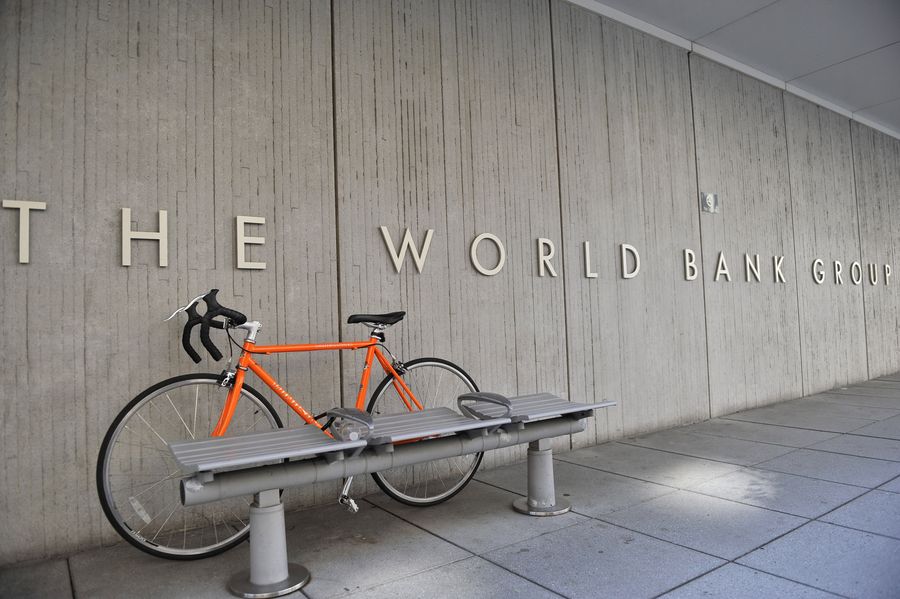
Photo taken on Sept. 12, 2012 shows the logo of the World Bank headquarters in Washington D.C., the United States. (Xinhua/Wang Yiou)
Measured by purchasing power parities (PPPs), over half of total global economic activity was in low- and middle-income economies in 2017, and the world's two largest economies, the United States and China, together accounted for one third of global GDP, according to the World Bank.
WASHINGTON, May 19 (Xinhua) -- The size of the global economy was nearly 120 trillion U.S. dollars in 2017 measured by the new purchasing power parities (PPPs), and over half of total economic activity was in low- and middle-income economies, according to a report released by the World Bank's International Comparison Program (ICP) on Tuesday.
High-income economies accounted for 49 percent of global PPP-based gross domestic product (GDP) in 2017, while upper and lower middle-income economies contributed 34 percent and 16 percent respectively, the report said.
China's GDP stood at 19,617 billion dollars in PPP terms in 2017, while the United States' GDP was 19,519 billion dollars, according to the report. The world's two largest economies together accounted for one third of global GDP.
India's GDP stood at 8,051 billion dollars, becoming the world's third-largest economy, followed by Japan, Germany and the Russian Federation, the report showed.
"The new data will help to improve our collective understanding of the global economy, serving as a crucial benchmark from which to measure the economic impact on economies across the globe as we work to achieve better development outcomes," World Bank Managing Director of Development Policy and Partnerships Mari Pangestu said in a statement.
By collecting price data for many goods and services, together with total spending on them, the ICP produces PPPs which make it possible to compare the relative sizes of economies and the per capita income and consumption of their people, controlling for price level differences across countries.
However, PPPs are statistical estimates and should be treated as approximations to true values, subject to sampling, measurement and classification errors. PPPs should not be used as indicators of the under- or overvaluation of currencies, the report noted.
The ICP is one of the world's largest statistical initiatives, coordinated by the World Bank under the auspices of the United Nations Statistical Commission. ICP 2017 marks the ninth comparison completed since the initiative was launched over 50 years ago, covering 176 participating economies for reference year 2017, according to the World Bank. ■



